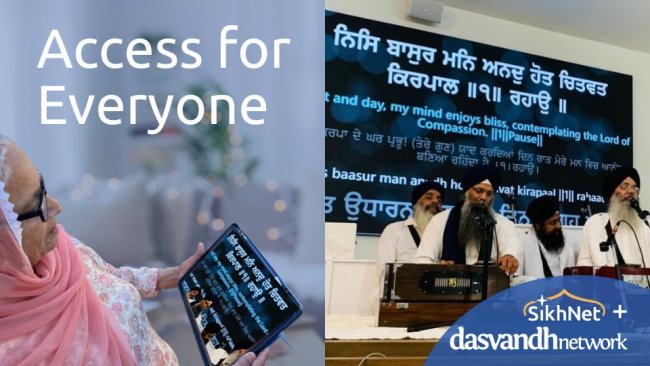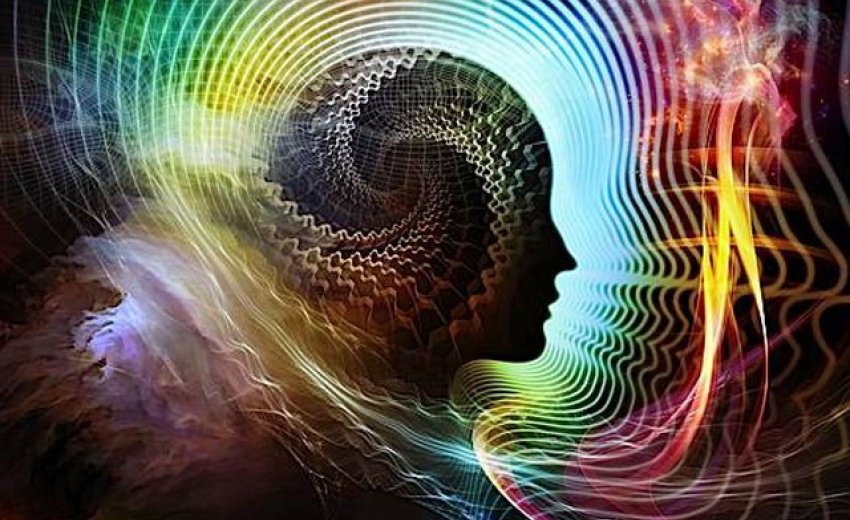Introduction:
Sri Guru Granth Sahib (SGGS), the Sikh scripture, is a unique creation in the history of world religions as it contains the sacred writings of Sikh Gurus and more than 30 saints and bards belonging to different religious and cultural traditions of India. Sikhism is a monotheistic religion and hence, believes that "God" is One, and prevails in everything, as symbolized by the symbol Ik Onkar (one all pervading spirit). The fundamental belief of Sikhism is that God exists, indescribable yet knowable and perceivable to anyone who surrenders his ego and Loves the Almighty. The Sikh Gurus have described God in numerous ways in their hymns included in the SGGS, the holy scripture of Sikhism, but the oneness of the deity is consistently emphasized throughout.God is described in the Mool Mantar (lit. Prime Utterance), the commencing verse in the SGGS:
ੴ ਸਤਿ ਨਾਮੁ ਕਰਤਾ ਪੁਰਖੁ ਨਿਰਭਉ ਨਿਰਵੈਰੁ ਅਕਾਲ ਮੂਰਤਿ ਅਜੂਨੀ ਸੈਭੰ ਗੁਰ ਪ੍ਰਸਾਦਿ ॥
ikk ōankār sat(i)-nām(u) karatā purakh(u) nirabha'u
niravair(u)
akāla mūrat(i) ajūnī saibhan(g) gur(a) prasād(i).
There is but one all pervading spirit, and it is called the truth,
It exists in all creation, and it has no fear, It does not hate and,
it is timeless, universal and self-existent!
You will come to know it through the grace of the Guru.
Mind, Body and Soul connection in SGGS
The human being is comprised of three components, Mind, Body and Soul. For a healthy person, all these components need to function in an efficient and coordinated manner. Your mind, body and soul all have to work together in harmony. What is confirmed by Gurbani is that the body, mind and soul are three distinct and necessary components that make up a person; further, that these are all the product of God and together these three separate components function in unity to excel the human being to the highest spiritual heights.
SGGS explores the relationship between mind, body and soul. Human body is obtained by good fortune after passing through a cycle of 8.4 million species as ordained in Hindu scriptures, and is considered to be a gift of God. Body needs to be nurtured as it is the abode of God. Guru Nanak considers the human body as a vehicle of soul. Prime importance is given to soul in Sikh metaphysics. Body is also called temple of God (Hari Mandir). If a man's soul is not tuned to God, he is as good as dead.
vadai bhaag ih sareer paa-i-aa. maanas janam sabad chit laa-i-aa.
bin sabdai sabh anDh anDhayraa gurmukh kiseh bujhaa-idaa.
By great good fortune, I obtained this body; in this human life, I have
focused my consciousness on the Word of the Shabad. Without the Shabad,
everything is enveloped in utter darkness; only the Gurmukh understands.
(SGGS, M.3, Ang 1065)
jee-o paa-ay tan saaji-aa rakhi-aa banat banaa-ay.
akhee daykhai jihvaa bolai kannee surat samaa-ay.
pairee chalai hathee karnaa ditaa painai khaa-ay.
jin rach rachi-aa tiseh na jaanai anDhaa anDh kamaa-ay.
jaa bhajai taa theekar hovai ghaarhat gharhee na jaa-ay.
naanak gur bin naahi pat pat vin paar na paa-ay.
He placed the soul in the body which He had fashioned.
He protects the Creation which He has created.
With their eyes, they see, and with their tongues,
they speak; with their ears, they bring the mind
to awareness. With their feet, they walk,
and with their hands, they work; they wear and eat
whatever is given. They do not know the One
who created the Creation. The blind fools do their
dark deeds.When the pitcher of the body breaks
and shatters into pieces, it cannot be re-created again.
O Nanak, without the Guru, there is no honour;
without honour, no one is carried across.
(SGGS, M.1, Ang 138)
har mandar ayhu sareer hai gi-aan ratan pargat ho-ay.
manmukh mool na jaannee maanas har mandar na ho-ay.
This body is the Temple of the Lord, in which the jewel of
spiritual wisdom is revealed. The self-willed manmukhs do not know
anything at all; they do not believe that the Lord's Temple is within.
(SGGS, M.3, Ang 1346)
There are 105 hymns in SGGS where connection between mind and body is elaborated. The mind and body are offered to the Guru by the devotee in utter devotion. The Lord comes to dwell in the body of the devotee and his mind and body blossom forth and flourish. The fire of ego is extinguished and a soothing effect is produced in both body and mind:
tan man gur peh vaychi-aa man dee-aa sir naal.
I have sold my body and mind to the Guru, and
I have given my mind and head as well. (SGGS, M.1, Ang 20)
sabh tan man hari-aa ho-i-aa naanak har vasi-aa man so-ay.
Then, the body and mind totally blossom forth and flourish;
O Nanak, the Lord comes to dwell within the mind. (SGGS, M.4, Ang 41)
chit aavai os paarbarahm lagai na tatee vaa-o.
If you come to remember the Supreme Lord God, then
your body and mind shall be cooled and soothed. (SGGS, M.5, Ang 70)
Role of Consciousness in Mind, Body and Soul
Consciousness is the state or quality of awareness, of being aware of an external object or something within oneself. In fact, consciousness is directed outwards to objects, inwards to soul (atma). Atma is pure consciousness without any content. Atma is not different from Paramatma, the Cosmic Consciousness. Bhagat Kabir designated it as Ram ki ans (a by-product of Ram). It is the subtlest, purest essence of life.
kaho kabeer ih raam kee aNs.
Says Kabeer, this is formed of the same essence as the Lord.
(SGGS, Bhagat Kabir, Ang 871)
jin tan man dee-aa surat samo-ee.
He gave me body and mind, and infused consciousness
into my being. (SGGS, M.1, Ang 1027)
aDhi-aatam karam karay din raatee.
nirmal jot nirantar jaatee.
Whoever does the deeds of the soul, day and night, sees
the immaculate Divine Light deep within. (SGGS, M.1, Ang 1039)
Human body is comprised of five elements namely air, water, fire (heat), earth and ether. After the death, these elements merge in the elements of the environs and the soul is liberated from the body for its onward journey. The birth of human is a biological process explained in SGGS, viz. from union of male sperm and female ovum.
paaNch tat ko tan rachi-o jaanhu chatur sujaan.
jih tay upji-o naankaa leen taahi mai maan.
Your body is made up of the five elements;
you are clever and wise - know this well.
Believe it -you shall merge once again into the One,
O Nanak, from whom you originated. (SGGS, M.9, Ang 1427)
rakat bind kaa ih tano agnee paas piraan.
This body is made of blood and semen.
It shall be consigned to the fire in the end. (SGGS, M.1, Ang 60)
Since the body consists of five elements (Panch Tat); hence the soul in the body has therefore been called Panch Bhoo Atma, the soul of the five elements in SGGS. It means the soul is entangled in the body and has to overcome the influence of its elements.
panch bhoo aatmaa har naam ras pokhai.
The soul, the subtle essence of the five elements, cherishes the Nectar
of the Naam, the Name of the Lord. (SGGS, M. 5, P. 299)
panch bhoo aatmaa vas karahi taa tirath karahi nivaas.
If your soul overcomes the five elements, then you shall come to have
a home at the true place of pilgrimage. (SGGS, M.3, Ang 491)
Mind is considered to be an integral part of God consciousness and it needs to be awakened to realize its true potential and origin. The mind is trapped by worldly illusion called Maya and is afflicted by ego, desire and pride. It is led astray from God consciousness and wastes its opportunity to attain liberation from the cycle of re-incarnation. The positive and negative qualities of Mind are elaborated in SGGS.
man tooN jot saroop hai aapnaa mool pachhaan.
O my mind, you are the embodiment of the Divine Light (consciousness) -
recognize your own origin. (SGGS, M.3, Ang 441)
Man ṯūʼn gārab ati▫ā gārab laḏi▫ā jāhi.
Mā▫i▫ā mohṇī mohi▫ā fir fir jūnī bẖavāhi.
Gārab lāgā jāhi mugaḏẖ man anṯ ga▫i▫ā pacẖẖuṯāvhe.
Ahaʼnkār ṯisnā rog lagā birthā janam gavāvhe.
Manmukẖ mugaḏẖ cẖīṯėh nāhī agai ga▫i▫ā pacẖẖuṯāvhe.
I▫o kahai Nānak man ṯūʼn gārab ati▫ā gārab laḏi▫ā jāvhe. ||6||
O mind, you are so full of pride; loaded with pride, you shall depart.
The fascinating Maya has fascinated you, over and over again,
and lured you into reincarnation. Clinging to pride, you shall depart,
O foolish mind, and in the end, you shall regret and repent.
You are afflicted with the diseases of ego and desire,
and you are wasting your life away in vain.
The foolish self-willed manmukh does not remember
the Lord, and shall regret and repent hereafter.
Thus says Nanak: O mind, you are full of pride;
loaded with pride, you shall depart. (SGGS, M.3, Ang 441)
Mind is also considered as an entity composed of five elements in subtle form in SGGS. It is influenced by Maya and worldly desires. It has to be liberated by grace of God.
ih man karmaa ih man Dharmaa.
ih man panch tat tay janmaa.
This mind commits its deeds of karma, and this mind follows the Dharma.
This mind is born of the five elements. (SGGS, M. 1, P. 415)
tan jal bal maatee bha-i-aa man maa-i-aa mohi manoor.
The body is burnt to ashes; by its love of Maya,
the mind is rusted through. SGGS, M.1, Ang 19)
The human Soul (Atma) and the Cosmic Soul (Parmatma) are intertwined and indistinguishable one from the other. Those who understand the working of their own soul are already in the realm of Supreme Soul or God. Soul (Atma) is also equated with the Creator God in the SGGS:
aatam meh raam raam meh aatam cheenas gur beechaaraa.
The Lord is in the soul, and the soul is in the Lord.
This is realized through the Guru's Teachings. (SGGS, M.1, Ang 1153)
jinee aatam cheeni-aa parmaatam so-ee.
Those who understand their own souls, are themselves the Supreme Soul.
(SGGS, M.1, Ang 421)
The experiential realization of this identification of Soul (Atma) with the Supreme Soul (Parmatma) is the summum bonum of Sikh mysticism. The purpose of human birth is to reunite the atma with Parmatma but the humans have a characteristic affliction, that of ego, which is the real cause of the gulf that is sought to be bridged. Reunion is therefore possible by giving up the ego that caused the duality and hence the separation from God:
aatmaa paraatamaa ayko karai.
antar kee dubiDhaa antar marai|
His soul and the Supreme Soul become one.
The duality of the inner mind is overcome. (SGGS, M.1, Ang 661)
Bibliography
1. Sri Guru Granth Sahib (SGGS), the holy scripture of Sikh religion. Published by Golden Temple Press, Amritsar, 2017. M.1refers to the Bani of 1st Guru, Guru Nanak, and so on for other Gurus. P refers to page number of SGGS.
2. The Sikh Encyclopedia. Editor, Harbans Singh, Published by Punjabi
University, Patiala, 1998; https://www.thesikhencyclopedia.com
3. Rawel Singh, The Creator, Soul and Body Relationship. Posted 14 June, 2011; http://www.sadhsangat.com.
4. Hardev Singh Virk, Gurbani Di Saral Viakhia. Published by Panj Pani
Parkashan, Mohali, 2017.
5. Hardev Singh Virk, Scientific Vision in Sri Guru Granth Sahib. Published by Singh Brothers, Amritsar, 2007.
6. Mind, Body and Soul. https://en.wikipedia.org/wiki/Mind_Body_%26_Soul.
------------------------------
E-mail: [email protected]






